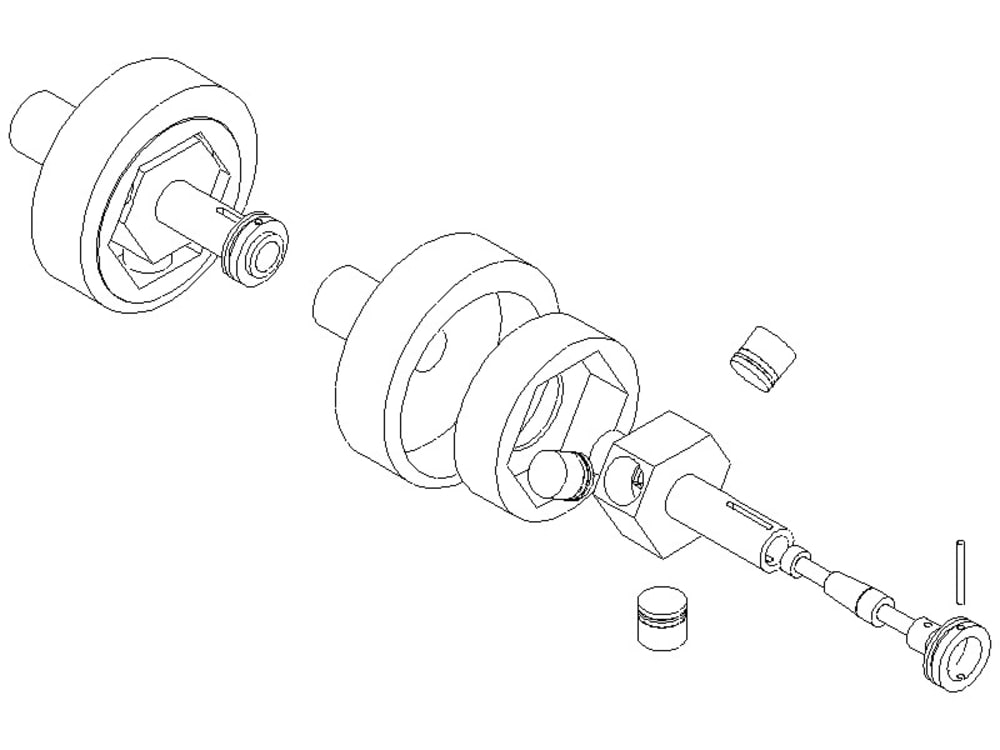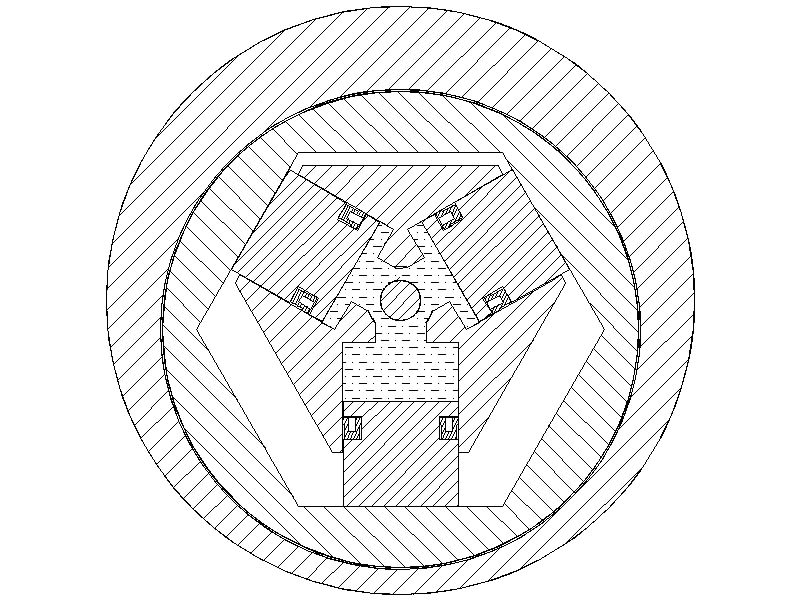A clutch that controls the amount of torque communicated between two rotating members by regulating the flow of a constant volume of fluid contained within the clutch. The clutch is fully engaged when a valve prevents the flow of fluid. In that state the components of the clutch are locked together. The torque is controlled by opening the valve. When the valve is partially open the power loss is converted into fluid-friction. Unlike conventional clutches this clutch has no sacrificial friction discs.
The clutch is very compatible with with any form of automation because the friction produced is very predictable and controllable. Conventional clutches rely on the coefficient-of-friction between the surfaces of the members and the friction disk but there are two values for that coefficient depending on whether they are sliding or static relative to each other. The transition between the two states is sudden and unpredictable and can result in "clutch snatch".
The friction within this clutch depends only on the flow rate of the fluid controlled by the valve and because of that there can be no sudden change in the torque transmitted. One example of a benefit of this to vehicle manufacturers would be allowing them to only produce efficient synchromesh transmissions that could be operated either in manual or automatic mode. It could also reduce cost by making synchro-hubs in the transmission unnecessary.
The mechanism is not complex. It consists of a disk with an eccentric recess (this would likely be attached to an engine flywheel), an eccentric follower, a cylinder housing containing a minimum of three radial cylinders and pistons with hydraulic seals and a valve mechanism with external means to position it. The clutch can also be constructed with any number of cylinders/pistons greater than three.
Operation of the clutch depends on the displacement to be constant at all times. There are two requirements to effect that:
The first requirement is that the cylinders are distributed radially at equal angles. The angle is 360 degrees divided by the number of cylinders. Therefore 120 degrees for three, 90 for four, 72 for 5 etc. It is also possible to gang multiple cylinders axially within one cylinder housing all sharing one control valve.
The second requirement is that the pistons must move with sinusoidal motion relative to the rotation of the cylinder housing. This clutch has a simple mechanism to achieve that. Sinusoidal motion is required to maintain constant displacement. The analogy from electrical theory is that there is no current flowing in the neutral wire of a fully balanced three-phase power distribution system because the sinusoidal currents flowing in the other three wires always sum to zero.
This clutch can be constructed in metal using well known manufacturing techniques.
This description refers to the basic elements and operation of the clutch but the inventor is aware of potential refinements and enhancements.
Like this entry?
-
About the Entrant
- Name:Andrew Barrowman
- Type of entry:individual
- Patent status:pending






